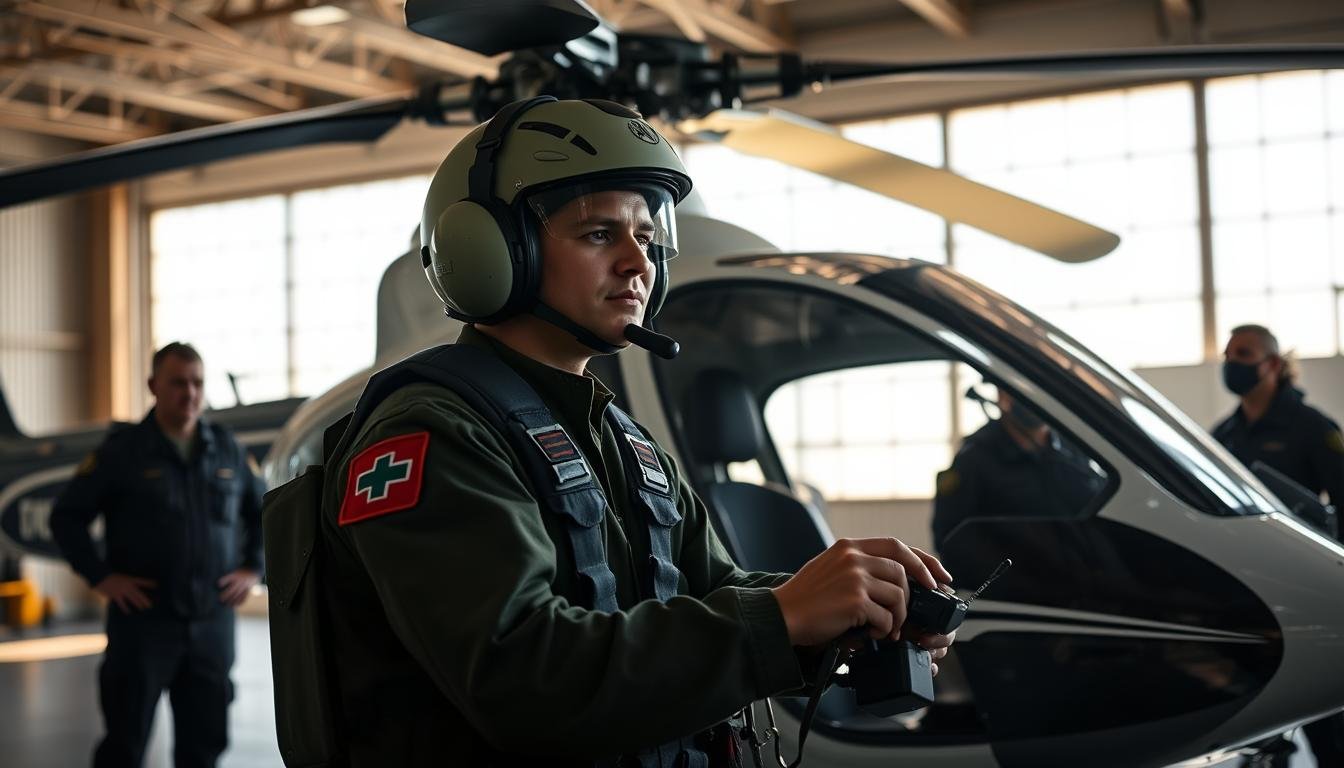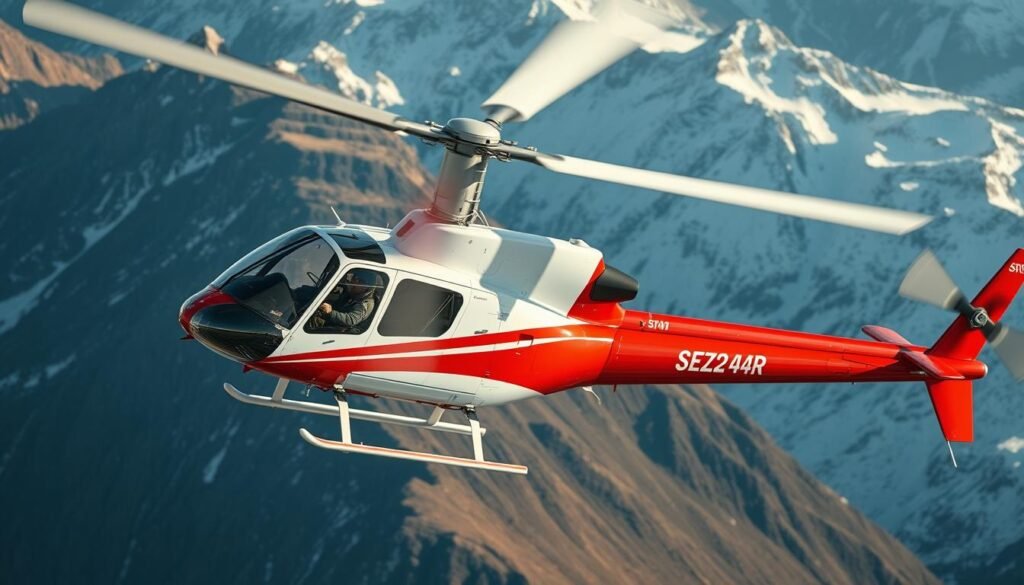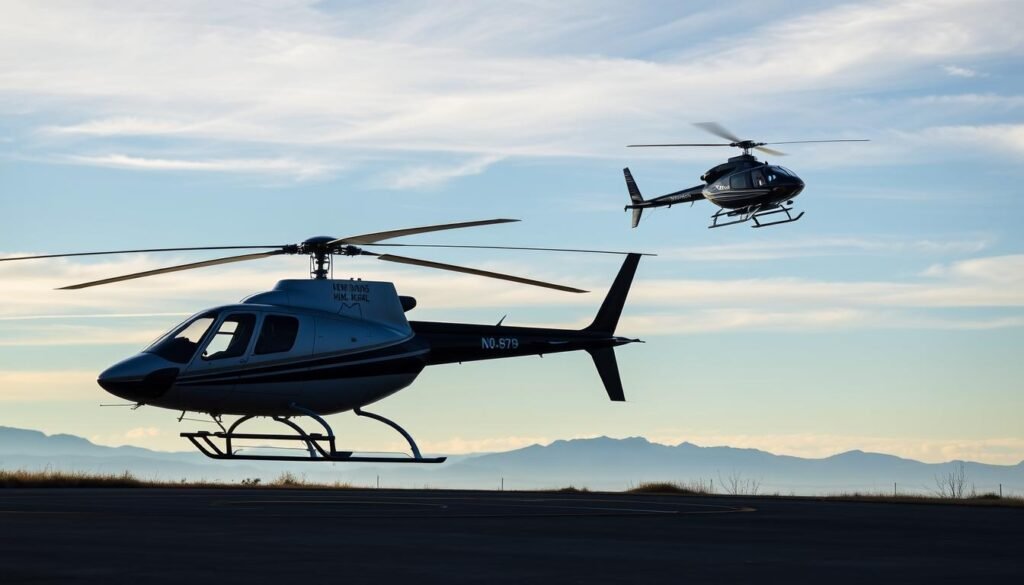Fact: The U.S. may face a shortfall of tens of thousands of rotorcraft pilots through 2036, creating urgent demand for trained crews.
This roundup maps the pilot training pathway from private to commercial with instrument ratings, and it explains how turbine hours and instructing propel a candidate toward EMS roles.
Readers will see how program choices affect time to job-readiness, safety culture, fleet mix, and ties to air ambulance services. SUU Aviation’s five-semester pathway is an example of a fast, structured option that covers common ratings and turbine transition; learn more at SUU Aviation helicopter program.
Cost, location, and instructor background shape outcomes. Practical guidance on expenses and options appears in a cost comparison resource at helicopter training costs.
Key Takeaways
- Demand for helicopter pilots is rising; plan training to meet industry timelines.
- Structured programs speed the journey from core ratings to turbine time.
- Evaluate fleets, weather exposure, and proximity to hospital networks.
- Financing and VA benefits can reduce the financial burden of training.
- Instructing and turbine experience are critical to becoming job-ready.
Why EMS Helicopter Training Demands Specialized Flight Schools
Operating an air ambulance requires a skill set shaped by night work, tight landing zones, and rapid decision-making.
Helicopter pilot programs that target medical missions teach students to fly close to terrain and into confined areas. Those environments leave little margin for error, so schools emphasize precise procedures and task discipline.
Specialized curricula cultivate instrument proficiency, crew resource management, and weather judgment. Students rehearse degraded visual environments and learn when to use IFR to maintain safety.
- Realistic mission briefs build rapid planning and landing‑zone assessment skills.
- Scenario-based drills reinforce checklists, sterile cockpit discipline, and risk assessment.
- Turbine experience and systems knowledge are integrated so graduates match service aircraft demands.
Programs aligned with medical services also prepare pilots for FAA medical standards and the physical demands of the job. This blend of technical and non‑technical skills produces candidates with leading‑edge competence that employers value.
| Training Focus | General Programs | Specialized Medical Programs |
|---|---|---|
| Instrument Work | Basic IFR exposure | Advanced IFR and degraded-vision scenarios |
| Operational Rhythm | Planned sorties | Dispatch cycles, night ops, and rapid briefs |
| Aircraft Experience | Piston helicopters | Turbine platforms common to air services |
Prospective pilots should review program ties to service operators and mission simulations. For a practical career guide that includes route-to-job advice, see how to become an EMS helicopter.
Selection Criteria For The Best Flight Schools For EMS Helicopter Training
Selecting the right program hinges on measurable standards that predict real-world readiness. Prospective pilots should confirm that a provider sequences private, instrument, and commercial certificates with integrated ground and flight work. This structure improves retention and speeds checkride readiness.
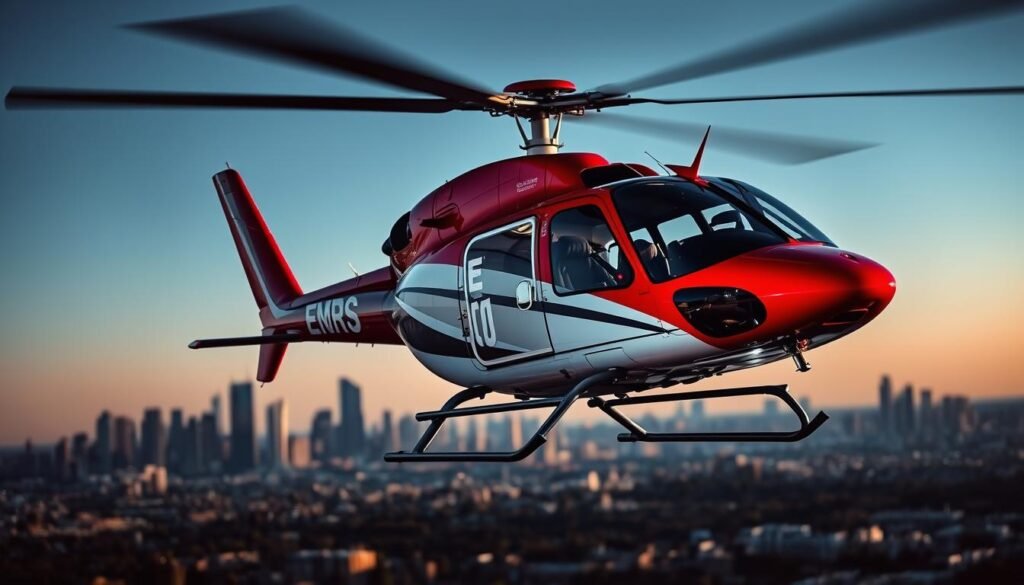
Licenses And Ratings: Private, Commercial, And Instrument
Verify that the curriculum includes focused instrument training, hood time, and avionics practice that reflect IFR work in medical missions. Structured syllabi help students earn private, instrument, and commercial certificates efficiently. A Part 141 program can reduce mandated hours under an approved syllabus while keeping oversight and quality assurance.
Flight Hours, Turbine Time, And Real-World Experience
Employers value genuine turbine time and diverse mission scenarios. Instructing remains a common route to build totals and refine decision-making.
- Compare graduate metrics: total hours at graduation and time-to-first-job.
- Check turbine transition options and whether hours count as industry-recognized experience.
- Look for scenario-based flying: confined-area ops, night landings, and inadvertent IMC recovery.
FAA Medical Standards, Safety Culture, And Operating Procedures
Confirm that the program teaches FAA medical requirements and embeds safety management systems. Standard operating procedures, instructor standardization, and data-driven debriefs matter.
Knowledge development should be structured with stage exams and mock orals so graduates perform under pressure. Finally, ensure the fleet and avionics match what pilots will face in EMS operations to reduce transition time and accelerate career progress.
Top U.S. Flight Schools Aligned With EMS Career Pathways
A focused set of U.S. programs emphasize turbine transition, IFR practice, and instructor routes that speed career progression. These elements matter when a pilot aims to move into medical missions quickly and safely.
Pelican Flight Training: Professional Pilot Programs And Instructor Pipeline
Pelican Flight Training offers a structured professional pilot program with a clear instructor pipeline. Recent 2025 reviews praise supportive staff, pricing, and instructors.
“Embarking on my aviation journey with Pelican Flight Training was the best decision…”
Graduates often move into instructor roles, which accelerates turbine-eligible time and practical experience.
Summit Flight Academy: Private Through Advanced Helicopter Training
Summit provides continuity from private certificates through advanced helicopter work. That steady progression helps students build hours under standardized instruction.
Students report strong basics and reliable access to aircraft during peak seasons.
Leading Edge Aviation: Instrument And Professional Pilot Program Focus
Leading Edge Aviation centers on instrument proficiency and professional pilot pathways. Their syllabus targets IFR scenarios that mirror real mission demands.
Air Ambulance Services Integration And Local Hospital Networks
Prospective pilots should verify partnerships with regional air ambulance services and proximity to hospital helipads.
- Ask about ride-along policies and supervised exposure to SOPs.
- Compare seasonal flight availability and IFR-capable aircraft access.
- Confirm job placement support, turbine transition routes, and recent checkride pass rates.
| School | Strength | Instructor Pipeline | IFR Access |
|---|---|---|---|
| Pelican Flight Training | Professional pilot program, strong reviews | Active—graduates become instructors | Good—IFR syllabus and avionics |
| Summit Flight Academy | Clear private-to-advanced pathway | Moderate—structured ratios | Variable—season dependent |
| Leading Edge Aviation | Instrument focus, procedural rigor | Targeted instructor development | High—regular IFR practice |
Global Helicopter Training Options Supporting EMS Goals
International programs offer a practical path to early ratings and diverse operational exposure. They can fit budgets while adding experience that matters to medical missions.

Fly EPT Spain: Competitive Pricing And Instructor Quality
Fly EPT Spain earned a 30 Mar 2025 review noting,
“Great school, good prices & awesome instructors.”
The school appeals to cost-conscious helicopter pilot candidates. Competitive pricing and solid instructor support help students keep training tempo without large budget overruns.
International Student Considerations, Visa Paths, And Training Conversions
Students must plan visas and rating conversions early. Proper documentation and logbook standards speed later conversions when returning to U.S. operations.
- Compare Aircraft And IFR Access: Verify turbine or piston types, IFR availability, and night currency to protect EMS continuity.
- Schedule Realistic Monthly Hours: Confirm how many flight hours are feasible each month to set a reliable time-to-completion.
- Safety And Quality Signals: Look for standardized syllabi, transparent maintenance, and a clear safety culture that transfers to U.S. services.
- Cost Factors: Include housing, travel, and exchange-rate risk when calculating total cost of attendance.
| Consideration | Why It Matters | Action |
|---|---|---|
| Instructor Quality | Affects skill retention and procedural rigor | Request instructor CVs and recent student outcomes |
| IFR & Night Access | Maintains mission-relevant currency | Confirm syllabus items and simulator hours |
| Documentation & Conversion | Prevents delays on return to U.S. work | Verify logbook format and language proficiency requirements |
Training abroad can broaden procedural understanding and airspace familiarity. Use global programs to secure early certificates, then return to domestic providers to build turbine time and employer networks.
Pathway To An EMS Helicopter Cockpit: Ratings, Hours, And Skills
Becoming a medical-mission pilot depends on staged skill gains, measurable milestones, and realistic mission practice. The pathway moves from a private certificate through instrument work, then to commercial privileges and instructor routes that build turbine experience.
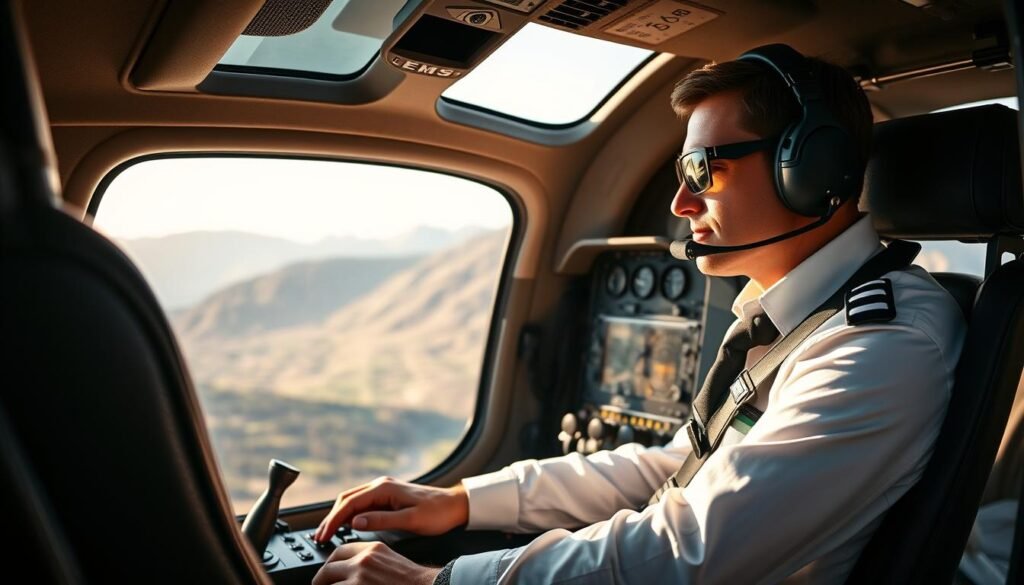
Private Helicopter Pilot Certificate: Foundational Skills And Solo Time
The private certificate often requires 50–60 hours in practice, though the FAA minimum is 35. Students master basic control, emergency procedures, and solo judgment beyond the bare minimum to gain true proficiency.
Instrument Rating: IFR Proficiency For Low-Visibility Operations
Instrument rating training teaches IFR procedures and degraded-visibility recovery. This rating aligns directly with mission needs and keeps pilots legal and safe in marginal weather.
Commercial Pilot Certificate: Advanced Maneuvers And Night/Cross-Country
Under Part 141, commercial training often totals about 115 hours. Pilots refine night, cross-country, and advanced maneuver skills to professional standards employers expect.
Flight Instructor Route And Turbine Time Accumulation
Becoming an instructor is a common route to build hours quickly while sharpening communication and cockpit organization. EMS employers seek commercial pilots with instrument currency, turbine aircraft experience, and a current FAA medical.
| Certificate | Typical Hours | Core Skills |
|---|---|---|
| Private Pilot | 50–60 hrs (min 35) | Basic control, solo judgment, emergency procedures |
| Instrument Rating | Varies | IFR procedures, low-visibility recovery, avionics use |
| Commercial Pilot | ~115 hrs (Part 141) | Night ops, cross-country, advanced aeronautical decision-making |
| Instructor / Hour Building | As needed | Teaching reinforces skills and accrues turbine-eligible time |
Accreditation, Standards, And Weather Readiness
How a school documents stage checks, safety reporting, and instrument practice predicts a graduate’s real‑world readiness.

Part 141 Versus Part 61: Structure, Time, And Training Quality
Part 141 programs use FAA‑approved syllabi and staged checks that can reduce hours to a commercial certificate while keeping oversight and predictability.
Part 61 delivers flexibility but places more onus on the student and instructor to maintain consistent progression and currency. That difference matters when an operator evaluates a candidate.
IFR Training Depth, Weather Decision‑Making, And Safety Systems
Realistic IFR work, frequent instrument approaches, and scenario‑based weather briefs build usable judgment. Programs should teach METAR/TAF decoding, radar interpretation, and cockpit automation use.
Safety systems such as SMS, recurrent checks, and instructor standardization reinforce procedural compliance. Confirm how inadvertent IMC, upset recovery, and stabilized approach criteria are trained.
Students should also verify maintenance and dispatch practices to protect scheduled flight training and to support continuous skill development.
How To Choose The Right Helicopter Pilot Training Program
Choosing the right pilot program shapes how quickly a candidate reaches mission-ready status and how well they cope with real mission demands.
Budget, Financing Options, And Total Cost Of Training
Start with a clear budget that covers private, instrument, and commercial phases, checkrides, study materials, FAA medicals, and living costs. Compare financing, payment plans, and scholarships so surprises don’t delay progress.
Location, Weather Exposure, And Year-Round Flying
Pick a location with reliable weather and realistic seasonal variation. Year-round flying builds consistent flight time and decision-making under varied conditions without excessive cancellations.

Examine instructor qualifications, turnover, and student-to-instructor ratios; low turnover and experienced instructors signal higher quality. Review the fleet mix and avionics—IFR-capable aircraft speed mission readiness.
- Ask For Metrics: average time to each rating, pass rates, and mean total hours at graduation.
- Career Support: inquire about pathways to instructing, turbine transitions, and employer connections.
- Safety And Culture: confirm structured ground schools, debriefs, and maintenance responsiveness.
Align personal goals with program strengths. If a student targets medical missions, prioritize instrument depth, night ops, and proximity to air medical operators to shorten the path to a viable career.
Best Flight Schools For EMS Helicopter Training: U.S. & Global Roundup
Top programs combine clear roadmaps, instructor pipelines, and regular IFR work to shorten a pilot’s path to mission roles.
Pelican Flight Training, Summit Flight Academy, and Fly EPT Spain each earn recent positive reviews for instruction and student support.
Leading Edge Aviation stands out for instrument depth and a structured professional pilot program that mirrors air ambulance services procedures.
Key prerequisites to note are a commercial helicopter certificate, an instrument rating, turbine experience, and a current FAA medical.
Instructing remains a common hour-building step before moving into turbine aircraft roles. Prospects should verify hospital network ties, ride-along exposure, and clear alumni outcomes.
| Provider | Strength | Pathway Notes |
|---|---|---|
| Pelican Flight Training | Student support; instructor pipeline | Professional pilot program; fast route to instructing |
| Summit Flight Academy | Structured progression | Private → advanced ratings with steady aircraft access |
| Leading Edge Aviation | Instrument focus | IFR practice and SOP alignment with air services |
| Fly EPT Spain | Cost-effective option | Good instructors; early ratings before U.S. turbine tracks |
Action items: Compare fleet IFR capability, documented safety records, and how each program supports transitions into instructing or utility roles to build the required experience.
Conclusion
A Clear, Staged Path With Steady Hour Building And Solid Instrument Work Is The Practical Route To A Medical‑Mission Cockpit.
Becoming a helicopter pilot for air medical services requires private, instrument, and commercial ratings, a current FAA medical, and deliberate hour growth. Typical timelines: about a year to secure core ratings, then 3–5 years of focused experience to meet employer thresholds.
Choose providers that stress SOPs, weather discipline, IFR exposure, and instructor mentorship. Maintain recurrent learning, prioritize safety, and manage costs so progress stays uninterrupted.
Use this pilot training roundup as a shortlist starting point and verify outcomes, fleet capability, and real‑world links to air services at pilot training roundup.
